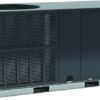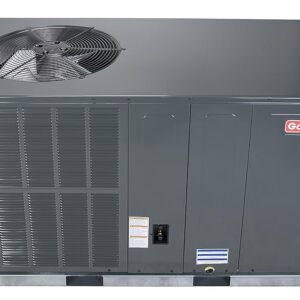- Country Of Origin : United States
- Easy Diy Installation: Pre-Charged R-410A 25Ft Quick Connect Line Doesn’T Require Special Tools, Equipment, Or Training
- New Smarthvac App: Wifi Control – Compatible With Alexa And Google Assistant – You Can Control Your Diy Anywhere With Your Apple Or Android Smart Device And An Internet Connection
- Designed To Efficiently Heat And Cool A Single 500 Sq Ft Room
MRCOOL – DIY-12-HP-115B25 DIY 12k BTU 22 SEER Ductless Heat Pump Split System 3rd Generation – Energy Star 120v (DIY-12-HP-115B)
$1,728.00
Last updated on Details
Category: Split-System Air Conditioners
3 reviews for MRCOOL – DIY-12-HP-115B25 DIY 12k BTU 22 SEER Ductless Heat Pump Split System 3rd Generation – Energy Star 120v (DIY-12-HP-115B)
Add a review Cancel reply
Related products
Split-System Air Conditioners
17.4 SEER2 MrCool Hyper Heat Central Ducted Split System with 10 Year Labor Warranty (3 Ton)
Rated 5.00 out of 5
$3,254,003,254.00
Split-System Air Conditioners
Split-System Air Conditioners
18k BTU 21.5 SEER MrCool Olympus Hyper Heat Ductless Heat Pump Split System – Wall Mounted
$1,724.51
Split-System Air Conditioners
Rated 4.88 out of 5
$2,831.00
Split-System Air Conditioners
$5,596.00












Joe Gabbard –
I have an attached 900 square foot garage and workshop with 9’ ceilings a double insulated door in the front and a single insulated door in the back. The garage is fully insulated.
I installed the unit by myself in stages.
Stage 1 – I ran and dressed two power lines (10/2 and 12/2 through panel, up walls, over attic space, down through wall to a hole in the wall to outside cutoff and socket( ~3 hours – it was hot and cramped). Stage 2 – prepped and installed a pad near hole (~4 hours – includes time to get stone & pad). Stage 3 – installed connected and tested the outside 220v cut off/+ 110v service receptacle and breaker (~3 hours). Stage 4 – uncrated the unit, positioned blower hanger, cut plumbing and control wire hole and installed the inside blower (~3 hours). Stage 5 – installed the heat pump on rubber mounts on the pad, and connected and dressed all hoses and wires and fired it up (~2 hours).
So far I have used the 24k unit to cool and dehumidify on-demand on a few hot summer days and it worked great without any dramatic impact to power consumption. Temperatures are just starting to drop and it heats up the space from high 50’s to mid 60’s pretty quickly but i will have to report back once i have run it more and have a better idea of power consumption.
All in all, very happy so far.
I would suggest that Mr. cool offer shorter line set options as i only needed about 10’ so the rest just sits coiled up behind the unit.
Update Feb 2024 – i have had the unit for over a year and a half and it is great so far, heats up the garage quickly and maintains temp with little effort.
Last winter i would keep it on freeze protect and heat up the space when needed, it maintained 50 degrees and took about 30 minutes to heat to a comfortable 65 degrees, increase in electricity usage was negligible.
In summer, I left it to cool at 72 degrees and again, no spike in electricity from what i spent cooling just the house the year before.
This winter, i have just left it heating at 62 degrees and again, no increase over past years when I was just heating the house.
However, 2023/2024 has been a warmer winter so far. Wife appreciates her car being warm in the morning, i appreciate being able to work in my shop year round without any delay to heat or cool.
Great product, no defects so far. Feb 2024
CF –
I bought this unit to heat/cool my 4 car garage (approx 950 sq ft). I converted a section of the garage to my workout and office space. The pre-charged lines worked perfectly and saved me the hassle of buying extra tools. The rest of the installation was straight forward – lots of videos online with good information.
The good – the cooling is excellent! With outside temperature of 100 the garage will get as hot as 95. The Mr Cool unit can drop the temperature in my office space to 85 in 5 minutes and under 80 in less than 15 minutes. The rest of the garage takes a bit longer to cool but eventually the entire space feels nice. I keep the setting at around 79 which honestly feels like 72 to me.
The not so good – the heating is ok. With outside temperature of 50 and garage at 65 it heats up to the 70’s no problem. 40 degrees out it’s ok. 30 degrees is where it struggles a bit. It can heat my office space up to 68 but I wouldn’t call it “warm”. My walls and ceiling are insulated but I don’t have insulated garage doors. I might insulate the doors before winter to see if I get improvement. It is impressive in that it can still provide heat even when it’s 5 degrees outside, however, I do not run it below 20 primarily because it’s not super effective at that level and I don’t want to risk damaging the unit.
I’m giving this a rating of a 5 because the installation was relatively easy, noise level is low, provides excellent cooling and I like the wireless connectivity app on my phone. Heating is good but not great. Overall a good value.
CF –
We have an older house that didn’t have HVAC in my office which is 15×27, but also not well insulated. We had been using a window A/C unit for the summer which worked OK, but in the winter I was running 3 heaters to try to keep it above 60 degrees. We had a mini-split professionally installed in another part of our house and it was amazing, but I didn’t want to spend $5k-$7k on another one and heard good things about these units.
Shipping was quick but did require a specialized delivery that was easy. It came in two boxes – the compressor for outside, and the head unit for inside. The concept is simple – drill a hole from where your inside unit mounts to the outside, run the connection lines through the hole to the compressor, and connect everything up with the precharged lines. I would highly recommend going to YouTube and watching some of the videos people have going into a little more depth about the process, but it really is about as simple as that.
A couple of things worth pointing out.
1) Most of the videos skip over the need to already have 220v electrical running to the unit. I installed a new 20A breaker and ran 12/2 wiring from the breaker through conduits to a non-fused A/C cutoff switch, and then ran a 12/2 whip from the cutoff to the unit. For most people I’d highly recommend just having an electrician run those for you so it’s ready to go
2) You have to drill a hole from inside to outside. It needs to be around 3.5″ in diameter. That’s fine if you have a wood frame siding. Ours is brick. I don’t care what the videos say, if you have a brick house go rent a core driller. I used a 4″ x 17″ core driller I rented for $200 from Home Depot and it took me about an hour to cut the hole (keeping it watered and going slowly to avoid burning out the bit or the drill). It made a night and day difference.
3) You’ll either need a ground pad or mounting brackets for the compressor. I picked up a ground pad from a local HVAC supply warehouse for around $40 and mounted the compressor to it.
4) Make sure you are reading the right manual. They sent both the multi-zone and single-zone manuals with our unit. There’s not a lot of difference, but if this is your first time doing this, the single-zone is going to keep you focused on the right things
5) Finally – *read the manual thoroughly before starting*. You only get one shot with the precharged lines, so make sure you understand the process and the routing. It’s not difficult, but you don’t want to get it wrong. I used a spray bottle with dish soap and water as my leak checker
Only other thing worth pointing out – DIY doesn’t mean not needing permits or inspections. You’ll want to potentially check your local jurisdiction to find out if you need permits for any of this.
All in all super happy – it’s quiet, keeps the office a perfect temperature and was easy to install. Would definitely recommend!